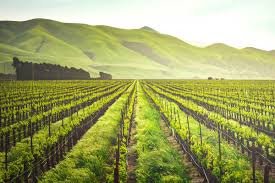Sustainable agriculture, also known as eco-friendly or regenerative agriculture, has gained popularity in recent years as people have realized how crucial it is to protect the environment for future generations. However, the origins of sustainable farming go all the way back in time, with several methods and ideologies evolving throughout the millennia. This article takes you on a historical tour of sustainable farming, tracing its development from prehistoric societies to the present as per Benedict Tpalen Jr
Sustainable farming prioritizes environmentally responsible practices to ensure long-term food production. It minimizes chemical inputs, promotes crop diversity, and conserves soil health. Utilizing efficient irrigation and reducing waste, sustainable farming aims to preserve ecosystems, mitigate climate change, and provide nutritious, ethical food while safeguarding future generations.
Ancient Agricultural Wisdom
The concept of sustainable farming has
ancient origins. More than 5,000 years ago, societies like the Mesopotamians
and Egyptians engaged in sustainable agriculture. To preserve soil fertility
and production, they used methods including crop rotation, soil enrichment, and
water management. The yearly flooding of the Nile River was used to restore
soil nutrients organically.
Medieval Agrarian Practices
In medieval Europe, the agricultural
landscape was characterized by small-scale, diversified farms. The three-field system,
which rotated crops like wheat, barley, and fallow land, helped maintain soil
fertility. Additionally, the use of manure as fertilizer was common practice.
The close relationship between humans, animals, and the land ensured a
sustainable farming model.
The Green Revolution
The Green Revolution, which began in the
middle of the 20th century, was characterized by the widespread application of
synthetic fertilizers, pesticides, and high-yield crop types. Although food
production increased significantly during this time, the ecosystem was also
degraded, biodiversity was lost, and soil erosion occurred. Sustainable
agricultural methods started to reappear as a reaction to these difficulties.
The Birth of Modern Sustainable
Agriculture
Modern sustainable agriculture reached a
turning point between the 1960s and the 1970s. The environmental movement was
sparked by pioneers like Rachel Carson, author of "Silent Spring,"
who raised awareness about the harmful consequences of pesticides. Simultaneously,
organic farming movements gained momentum, emphasizing the avoidance of
synthetic chemicals, promoting soil health, and nurturing biodiversity.
Sustainable Farming Practices Today
Today, feasible cultivating incorporates a
large number of practices and standards, including:
Organic farming:
Staying away from manufactured synthetics and hereditarily adjusted organic
entities (GMOs) while zeroing in on soil wellbeing and biodiversity.
Permaculture:
Planning rural frameworks in light of natural standards to expand manageability
and independence.
No-till farming:
Lessening soil disintegration and further developing water maintenance by
limiting furrowing and aggravation of the dirt.
Agroforestry: Integrating
trees and shrubs into farming systems to enhance biodiversity and soil health.
Conservation tillage: Reducing soil
erosion and promoting carbon sequestration by minimizing soil disturbance
during planting.
Conclusion

No comments:
Post a Comment